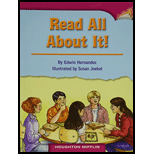
Concept explainers
Section 1
To find: The 70% confidence interval for the proportion of American adults who reported looking for information on food labels about whether the food they are purchasing is organic.
Answer to Problem 29E
Solution: The confidence interval is
Explanation of Solution
Calculation:
Compute the confidence interval using formula as follows:
where
Now, compute the 70% confidence interval as follows:
Interpretation: It can be concluded with 70% confidence that proportion of American adults who reported looking for information on food labels about whether the food they are purchasing is organic lies between 47.4% and 50.6%.
Section 2
To find: The 80% confidence interval for the proportion of American adults who reported looking for information on food labels about whether the food they are purchasing is organic.
Solution: The confidence interval is
Explanation:
Calculation:
Compute the confidence interval using formula as follows:
where
Now, compute the 80% confidence interval as follows:
Interpretation: It can be concluded with 80% confidence that proportion of American adults who reported looking for information on food labels about whether the food they are purchasing is organic lies between 47% and 51%.
Section 3
To find: The 90% confidence interval for the proportion of American adults who reported looking for information on food labels about whether the food they are purchasing is organic.
Solution: The confidence interval is
Explanation:
Calculation:
Compute the confidence interval using formula as follows:
where
Now, compute the 90% confidence interval as follows:
Interpretation: It can be concluded with 90% confidence that proportion of American adults who reported looking for information on food labels about whether the food they are purchasing is organic lies between 46% and 52%.
Section 4
To find: The 99% confidence interval for the proportion of American adults who reported looking for information on food labels about whether the food they are purchasing is organic.
Solution: The confidence interval is
Explanation:
Calculation:
Compute the confidence interval using formula as follows:
where
Now, compute the 99% confidence interval as follows:
Interpretation: It can be concluded with 99% confidence that proportion of American adults who reported looking for information on food labels about whether the food they are purchasing is organic lies between 45% and 53%.
Section 5
To find: The comparison of confidence intervals obtained in sections 1, 2, 3, and 4.
Solution: The width of confidence interval widens with increase in confidence level.
Explanation:
Calculation:
Now, compute the width of the 70%, 80%, 90%, and 99% confidence intervals.
The width of 70% confidence interval is calculated as shown below:
The width of 80% confidence interval is calculated as shown below:
The width of 90% confidence interval is calculated as shown below:
The width of 99% confidence interval is calculated as shown below:
From the above calculations, it is clear that if there is an increase in the confidence level, then there is an increase in the width of the confidence interval.
Want to see more full solutions like this?
 MATLAB: An Introduction with ApplicationsStatisticsISBN:9781119256830Author:Amos GilatPublisher:John Wiley & Sons Inc
MATLAB: An Introduction with ApplicationsStatisticsISBN:9781119256830Author:Amos GilatPublisher:John Wiley & Sons Inc Probability and Statistics for Engineering and th...StatisticsISBN:9781305251809Author:Jay L. DevorePublisher:Cengage Learning
Probability and Statistics for Engineering and th...StatisticsISBN:9781305251809Author:Jay L. DevorePublisher:Cengage Learning Statistics for The Behavioral Sciences (MindTap C...StatisticsISBN:9781305504912Author:Frederick J Gravetter, Larry B. WallnauPublisher:Cengage Learning
Statistics for The Behavioral Sciences (MindTap C...StatisticsISBN:9781305504912Author:Frederick J Gravetter, Larry B. WallnauPublisher:Cengage Learning Elementary Statistics: Picturing the World (7th E...StatisticsISBN:9780134683416Author:Ron Larson, Betsy FarberPublisher:PEARSON
Elementary Statistics: Picturing the World (7th E...StatisticsISBN:9780134683416Author:Ron Larson, Betsy FarberPublisher:PEARSON The Basic Practice of StatisticsStatisticsISBN:9781319042578Author:David S. Moore, William I. Notz, Michael A. FlignerPublisher:W. H. Freeman
The Basic Practice of StatisticsStatisticsISBN:9781319042578Author:David S. Moore, William I. Notz, Michael A. FlignerPublisher:W. H. Freeman Introduction to the Practice of StatisticsStatisticsISBN:9781319013387Author:David S. Moore, George P. McCabe, Bruce A. CraigPublisher:W. H. Freeman
Introduction to the Practice of StatisticsStatisticsISBN:9781319013387Author:David S. Moore, George P. McCabe, Bruce A. CraigPublisher:W. H. Freeman





